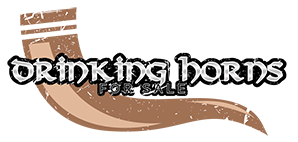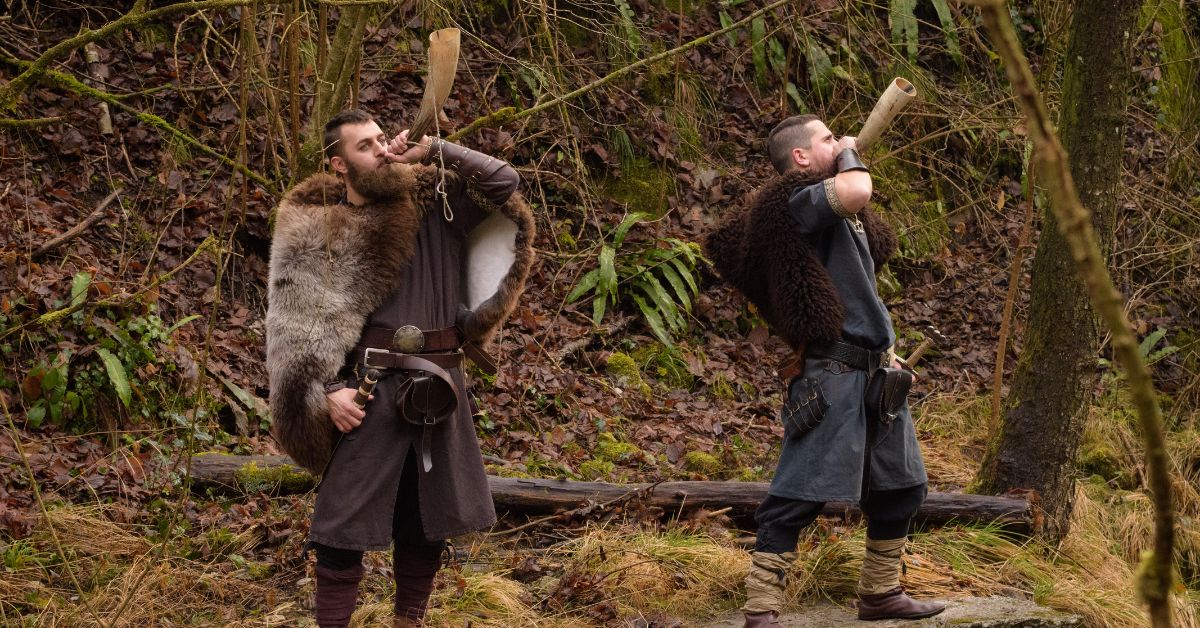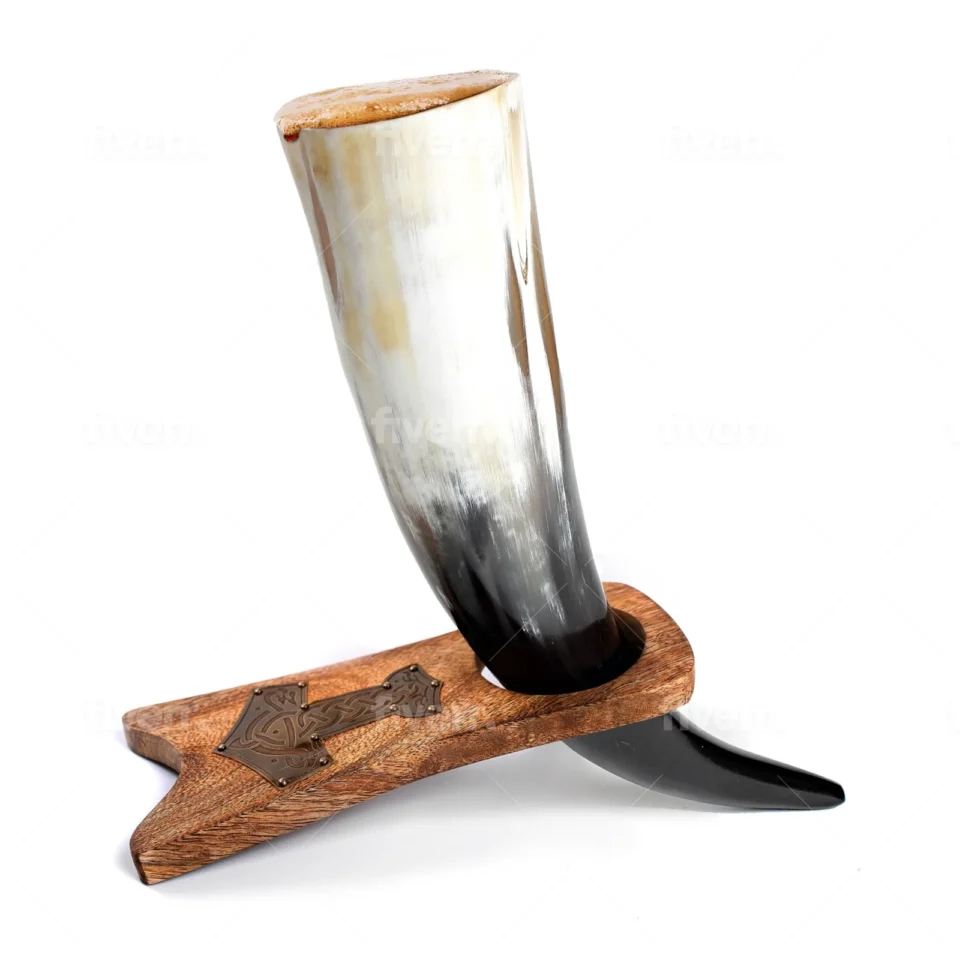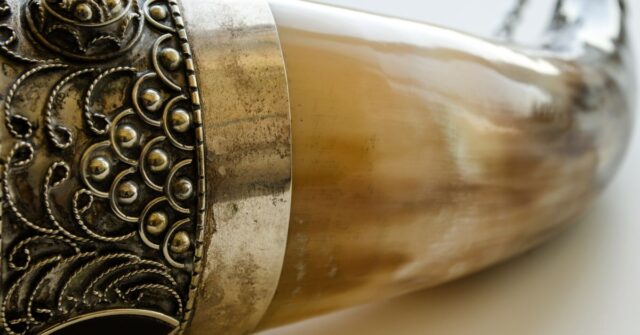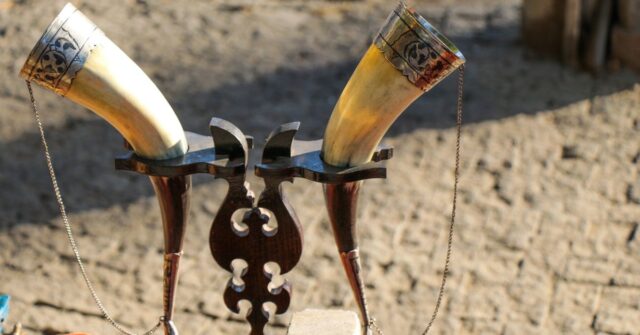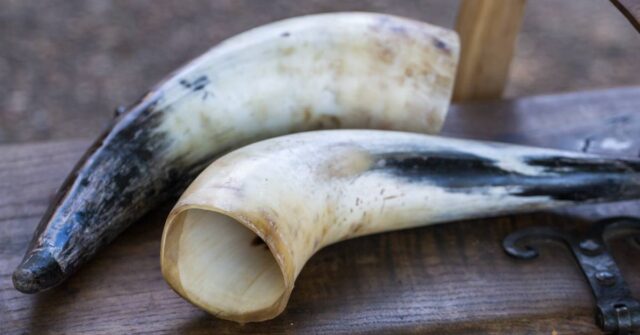The drinking horn, steeped in history and tradition, has served not just as a container for beverages but as a symbol of status and festivity across various cultures.
From the toasts of the medieval Norse warriors to the ceremonial uses in other ancient societies, drinking horns have a rich narrative that spans centuries.
Introduction to Drinking Horns
Drinking horns, traditionally made from the horns of bovid mammals, have been utilized by different cultures around the globe for ceremonial purposes and daily use.
Their durability and natural shape make them a unique vessel for drinking.
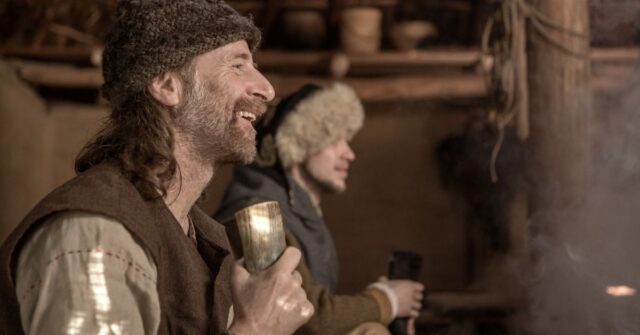
Historical Significance of Drinking Horns
Historically, drinking horns date back to the Neolithic era and have been significant in cultures ranging from the Scythians in Eastern Europe to the Vikings in Scandinavia.
They were often associated with the elite and warriors, symbolizing power and prestige.
Materials and Construction
The primary material for these horns is the keratinous outer part of bovine horns.
The crafting process involves softening the horn through boiling or steaming and then shaping it into a functional drinking vessel. Often, metal or wood bases are added to ensure stability when placed down.
Regional Variations in Drinking Horn Use
In Scandinavia, drinking horns were often intricately carved, sometimes plated with silver or gold.
In contrast, in the British Isles, they were more commonly fitted with simple wooden stands and less ornamentation.
Blowing Horns
While many are familiar with drinking horns, blowing horns hold their place in historical communication and ceremony. Originally used as signaling devices, these horns vary significantly in design and sound.

The Role of Blowing Horns in Ceremonies and Communication
Blowing horns were crucial in medieval times for both practical signaling on battlefields and in ceremonies.
Their loud, resonating sound could convey messages over long distances or announce the arrival of important individuals.
Distinguishing Features of Blowing Horns
Unlike drinking horns, blowing horns often have a narrow end finely cut or fitted with a mouthpiece to aid in sound production.
Their construction is specifically aimed at maximizing volume and clarity of tone.
How Blowing Horns Are Made
The creation of a blowing horn begins with selecting a larger and thicker horn, which is then hollowed out completely.
Craftsmen ensure the tip is appropriately shaped to fit a mouthpiece, typically made from metal or wood.
Drinking Mugs Made from Horns
Adapting from traditional drinking horns, horn mugs are crafted to offer a more stable and user-friendly experience.
These mugs combine the aesthetic of ancient traditions with the practicality needed for regular use.
Design and Functionality of Horn Drinking Mugs
Unlike their historical counterparts, horn mugs often come with a flat base and a handle. These adaptations make them suitable for modern use while still maintaining their historical charm.
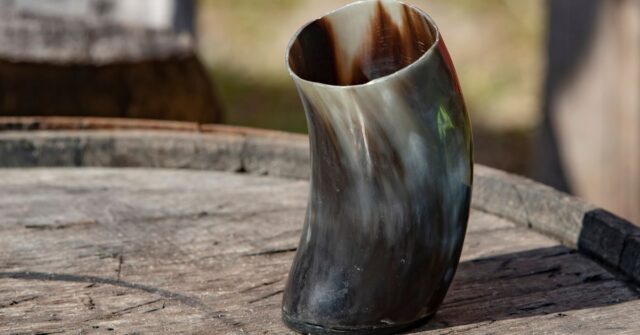
Decorative Elements in Horn Drinking Mugs
Many horn mugs are adorned with engravings or metalwork, adding to their appeal as decorative items as well as functional drinkware.
Maintenance and Care for Horn Drinking Mugs
Caring for horn mugs involves avoiding dishwashers and prolonged soaking. Regular oiling with natural oils can help maintain their luster and prevent cracking.
Other Types of Drinking Horns
Beyond the commonly known types, there are various other forms of drinking horns, each with its own cultural significance and unique design.
Carved and Embellished Drinking Horns
Some cultures take pride in intricately carved drinking horns that often depict scenes from mythology or important historical events, turning these vessels into works of art.
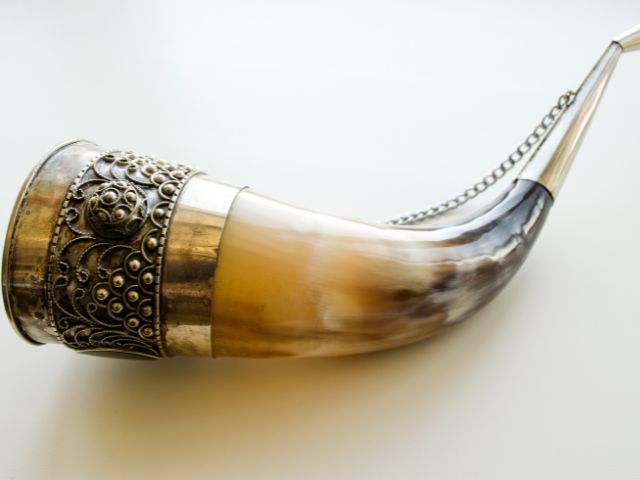
Ritualistic and Ceremonial Uses
In many cultures, certain drinking horns are reserved for specific rituals or ceremonies, where they might be used only by particular individuals or during special events.
Modern Uses of Drinking Horns
Today, drinking horns have found a place in modern cultural festivals and medieval reenactments, providing a historical touch to contemporary celebrations.
Preservation and Display
Collectors and historians alike value ancient drinking horns not only for their practical uses but also for their historical significance, which is why proper preservation is crucial.
Conservation Techniques for Ancient Horns
Professional conservation involves stabilizing the material and protecting it from environmental factors. This might include controlling humidity and avoiding exposure to direct sunlight.
Display Tips for Collectors
For those looking to display their drinking horns, using custom stands that minimize stress on the material and placing them in climate-controlled displays is recommended.
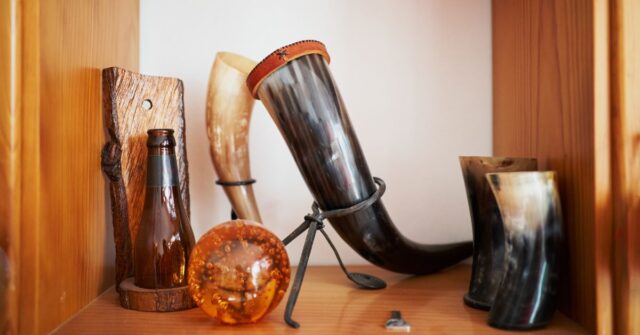
Conclusion
The legacy of drinking horns is a testament to their enduring appeal and significance across cultures. Whether used in ancient ceremonies or modern-day festivals, they continue to captivate and intrigue.
Continuing Tradition and Innovation in Horn Craftsmanship
Artisans today continue to explore new designs and applications for drinking horns, ensuring this ancient craft not only survives but thrives.
Where to Buy Authentic Drinking Horns
Authentic drinking horns can be found at specialty stores, online markets specializing in historical replicas, and at cultural festivals, offering enthusiasts a chance to own a piece of history.
